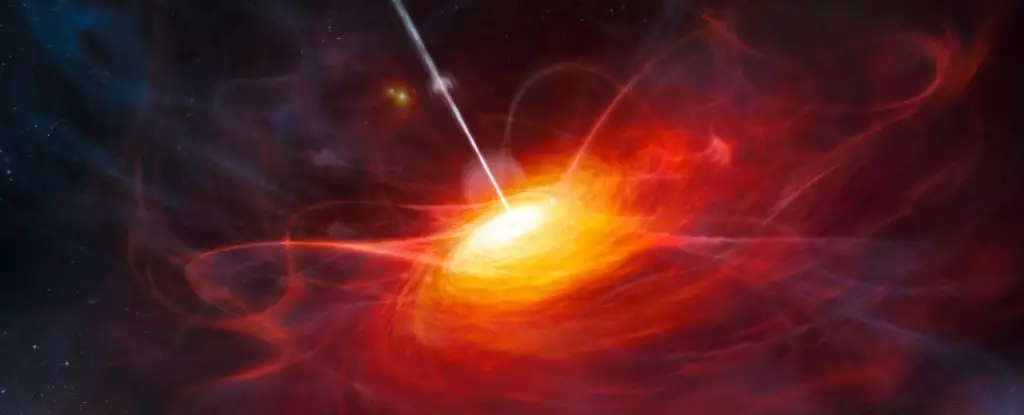The recent discovery of a massive black hole in the Cosmic Dawn has left astronomers puzzled. This black hole, located at the center of the galaxy J1120+0641, weighs in at more than a billion times the mass of our Sun. While larger black holes exist in the present universe, the real mystery lies in the timing of J1120+0641’s formation – less than 770 million years after the Big Bang. Scientists had previously theorized about the origins of this colossal black hole, but recent observations using the James Webb Space Telescope (JWST) have challenged some of these notions.
Quasar galaxies like J1120+0641 are characterized by a central supermassive black hole that feeds at an incredibly rapid rate, surrounded by clouds of gas and dust. The black hole’s accretion rate is limited by its Eddington limit, beyond which radiation pressure would halt the feeding process. However, some black holes, including the one in J1120+0641, exhibit signs of super-Eddington accretion, allowing them to temporarily bypass this limiting factor and consume material voraciously.
The JWST played a crucial role in deciphering the mysteries surrounding J1120+0641. Observations conducted in 2023 provided astronomers with detailed insights into the galaxy’s composition, revealing a dusty torus surrounding the black hole along with a glowing disk that feeds into it. Surprisingly, the analysis indicated that the black hole’s feeding process was rather ordinary, lacking the extreme characteristics expected from super-Eddington accretion.
Contrary to expectations, J1120+0641 appears to be a typical quasar galaxy with a black hole that isn’t consuming material at an unusually high rate. This challenges previous assumptions about the growth of massive black holes during the early stages of the universe. The discovery raises more questions than answers, suggesting that early quasars were not as anomalous as previously believed.
One plausible explanation for these enigmatic giant black holes is that they originated from massive ‘seeds’ rather than gradually evolving from smaller sources. These seeds could have been colossal clumps of matter or exceptionally large stars with hundreds of thousands of times the mass of the Sun. As more of these massive black holes are unveiled, this theory gains credibility as a plausible explanation for their mysterious presence in the cosmos.
The discovery of the massive black hole in J1120+0641 sheds light on the complexity of cosmic evolution and challenges our understanding of early quasar galaxies. The quest to unravel the mysteries of these behemoths at the dawn of the universe continues, urging astronomers to explore new theories and technologies to unlock the secrets of our cosmic origins.


Leave a Reply